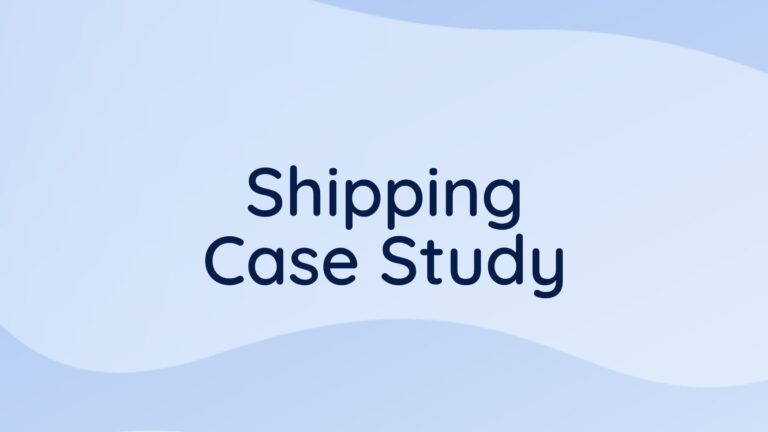
The Basics of Group Purchasing
Discover the basics of group purchasing and the benefits of working with a group purchasing organization to develop a comprehensive procurement strategy.
By Mackenzie Oakley | January 5, 2023
While cost savings is likely at the forefront of any procurement initiative, the profession continues to evolve with more focus than ever being placed on risk reduction, sustainability, strengthening supplier relationships, compliance and business continuity.
Thankfully, there is an opportunity for all businesses to implement a sourcing solution that encompasses all of these characteristics, while working cohesively with other procurement strategies.
The basics of group purchasing
Group purchasing refers to the practice of businesses or organizations coming together to purchase goods or services at a discounted price. This is typically done by forming a purchasing consortium or alliance, which allows the group to negotiate better prices from suppliers due to the larger volume of business they are bringing to the table.
There are many organizations that offer group purchasing services, and they typically work by aggregating the purchasing power of multiple businesses and using that leverage to negotiate discounts with suppliers. These group purchasing organizations often have contracts with a wide range of suppliers, and they offer their member businesses access to these contracts at discounted rates.
In addition to negotiating discounts, group purchasing organizations may also provide other services such as supply chain management, procurement consulting, and logistics support. By joining a group purchasing organization, businesses can often save money on their purchases, streamline their procurement processes, and access a wider range of goods and services.
Every business has the opportunity to implement a procurement solution that promotes better overall spend management while working cohesively with other procurement strategies.
Benefits of working with a group purchasing organization
There are several reasons why businesses might consider using a group purchasing organization (GPO):
- Cost savings: GPOs negotiate discounts on behalf of their members, which can lead to significant cost savings on the products and services that businesses purchase.
- Simplified purchasing process: GPOs often offer a centralized purchasing process that makes it easier for businesses to place orders and track their purchases.
- Access to a wider range of products and services: GPOs often have relationships with a wide range of suppliers, which can give businesses access to a greater selection of products and services they may need to operate.
- Enhanced negotiating power: By pooling their purchasing power, businesses that are members of a GPO may be able to negotiate better terms and prices than they could on their own.
- Improved compliance: GPOs can help businesses ensure that they are complying with all relevant laws and regulations, as well as industry standards.
Overall, GPOs can help businesses streamline their purchasing process, reduce costs, and access a wider range of products and services.
Cons of working with a GPO
There are a few potential reasons why an organization might choose not to use a group purchasing organization at any given time:
- Limited product selection: Some GPOs may have a limited selection of products and services that they can offer, so if an organization has specific needs that the GPO cannot accommodate, it may not be the best fit.
- Lack of flexibility: Certain GPOs may have strict policies and procedures in place that organizations must follow in order to participate in group purchasing. This can limit an organization’s flexibility in terms of how it procures goods and services.
- Potential loss of control: By participating in a GPO, an organization may give up some control over the purchasing process and may not have as much say in terms of which suppliers are used.
- Additional costs: Some GPOs might charge fees for their services, which can add additional costs to an organization’s procurement process.
GPO membership fees and requirements
Each group purchasing organization will have their own specific membership terms. Some GPOs charge an annual membership fee, while others may charge a percentage of the purchases made through the GPO or a combination of the two. Some GPOs may also require a minimum level of annual purchasing in order to qualify for membership.
It’s best to contact the GPO directly to learn more about their specific membership fees and requirements.
Utilizing group purchasing along with other procurement strategies
Group purchasing is a particular procurement strategy that involves a group of organizations coming together to purchase goods or services as a single entity and leveraging their collective buying power to negotiate better prices from suppliers. This can be an effective way for organizations to reduce costs and improve their bottom line.
Group purchasing can be used in conjunction with other procurement strategies, like strategic sourcing, for example. Strategic sourcing involves identifying and evaluating potential suppliers based on factors such as cost, quality, and reliability. Procurement professionals may use a variety of strategies, including group purchasing, to ensure that their organization is getting the best value for its money.
Procurement is not one-size-fits-all. Modern procurement practitioners can use a variety of strategies, including group purchasing, to ensure that their organization is getting the best value for its money.
Choosing the right group purchasing organization
When choosing the right group purchasing organization to work with, consider the following factors:
- Cost: Consider the overall cost of membership, including any fees or percentage of purchases that the GPO charges. Make sure that the cost of membership is offset by the discounts and savings you receive through the GPO.
- Suppliers: Look for a GPO that has relationships with a wide range of suppliers that can meet your business’s needs.
- Quality: Consider the quality of the products and services offered through the GPO. Some GPOs have quality control processes in place to ensure that their offerings meet certain standards.
- Customer service: Look for a GPO that has a good reputation for customer service and is responsive to the needs of its members.
- Contract terms: Review the contract terms carefully to understand the length of the agreement, any cancellation fees, and any other obligations you may have as a member.
The Una Difference
Before moving forward with a GPO partner, remember that not all group purchasing organizations are created equal. Here at Una, it’s our people, our values, and our community engagement that makes us stand out amongst some of the bigger names in the GPO space. In an industry focused on numbers and contracts, it’s easy to get lost in the business of group purchasing.
We’ve built a team of extraordinary people who have the experience and skill to excel in this business, coupled with the passion and purpose to delight our members and provide tremendous value. We are value-driven, member-centric, partner-focused, and committed to educating, advising, and enabling businesses to achieve tremendous savings.
Everything we do is centered around your success and we view ourselves as an extension of your procurement team. When you join Una, here’s what you can expect:
- Free membership: Una’s our pricing structure is set up so membership is always free to join and free to use. We are paid an administration fee by the supplier at the time of purchase allowing us to make and keep membership free for members.
- No membership contracts or exclusivities: Una does not require members to purchase from certain suppliers or commit to a specified purchase volume. Una membership is also free of contracts and exclusivities. Pick and choose the suppliers that will best suit your needs and remain in control.
- Dedicated account managers: Account representatives offering white glove service and customer experience managers focus on building a strong relationship with you at a pace that keeps everything moving towards your goals.
- Personalized consulting: Our team will identify blind spots within your spend visibility, review spending, and pinpoint additional savings opportunities.
- Education: There is often a gap in the understanding of what a GPO is and how we can save you money. Oftentimes, our first call with a member is explaining who we are, what we do, how we make money, and our strengths so you understand what you’re entering into as well as the concept.
- Spend analytics & reporting: We work closely with you to truly understand your spend categories, current suppliers, budget, and spend history. We will present a strategic plan and long-term strategy unique to your needs.
- Unique contract offerings: We have over 5,000 contracts available to our members, and if we don’t have a contract for what you need, we likely have a network connection for it and will pursue that contract for you.
- Supplier relationship management: We’re proud of the relationships we’ve built with our suppliers. Our suppliers treat our members well, and we are able to accomplish our goals faster, more smoothly, and more efficiently.
- Regular reviews: Una provides quarterly or yearly reviews to check in regarding your spend and determine whether there are additional savings opportunities or contracts we can connect you with.
- Speed to service & responsiveness: Our “keep it moving” mentality means our team delivers at a pace that sets us apart. Tools like Drift and Calendly speed up the process and remove bottlenecks so our members can reach us when they need us.
In the end, they way we work together is designed to offer you turn-key procurement solutions that empower you to achieve category quick wins, and then work to establish long-term strategies that make your business more profitable.
Working with a group purchasing organization and utilizing the basics of group purchasing helps level the playing field so any sized business can buy like the big corporations out there, especially when it comes to their indirect spend categories.
Learn more about membership:









